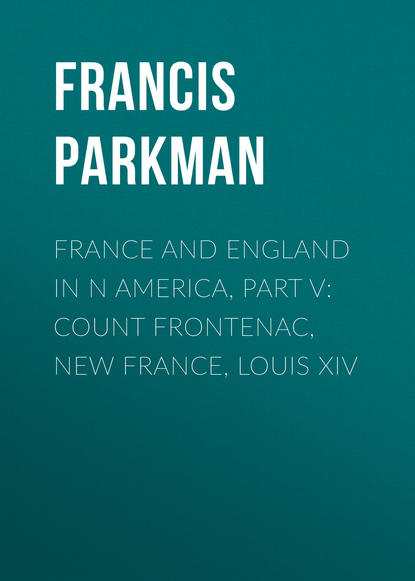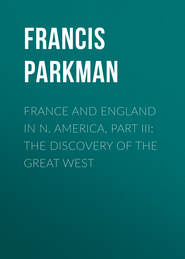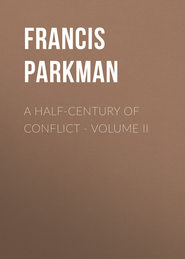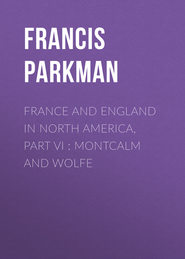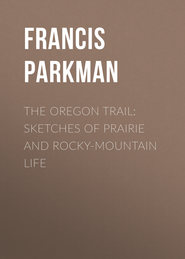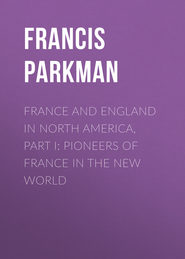По всем вопросам обращайтесь на: info@litportal.ru
(©) 2003-2024.
✖
France and England in N America, Part V: Count Frontenac, New France, Louis XIV
Настройки чтения
Размер шрифта
Высота строк
Поля
154
Denonville. Champigny says 832 regulars, 930 militia, and 300 Indians. This was when the army left Montreal. More Indians afterwards joined it. Belmont says 1,800 French and Canadians and about 300 Indians.
155
Tonty, Mémoire in Margry, Relations Inédites.
156
The name of Ottawas, here used specifically, was often employed by the French as a generic term for the Algonquin tribes of the Great Lakes.
157
Attestation of N. Harmentse and others of Rooseboom's party. N. Y. Col. Docs., III. 436. La Potherie says, three hundred.
158
Denonville au Ministre, 25 Août, 1687.
159
The above is drawn from papers in N. Y. Col. Docs., III. 436, IX. 324, 336, 346, 405; Saint-Vallier, État Présent, 92; Denonville, Journal; Belmont, Histoire du Canada; La Potherie, II. chap. xvi; La Hontan. I. 96. Colden's account is confused and incorrect.
160
Recueil de ce qui s'est passé en Canada depuis 1682; Captain Duplessis's Plan for the Defence of Canada, in N. Y. Col. Docs., IX. 447.
161
The first part of the extract is from Belmont; the second, from Saint-Vallier.
162
Information received from several Indians, in N. Y. Col. Docs., III. 444.
163
Denonville au Ministre, 8 Juin, 1687.
164
For authorities, see note at the end of the chapter. The account of Charlevoix is contradicted at several points by the contemporary writers.
165
Denonville au Ministre, 25 Août, 1687. In his journal, written afterwards, he says that the Senecas left twenty-seven dead on the field, and carried off twenty more, besides upwards of sixty mortally wounded.
166
Belmont. A few words are added from Saint-Vallier.
167
Procès-verbal de la Prise de Possession de Niagara, 31 Juillet, 1687. There are curious errors of date in this document regarding the proceedings of La Salle.
168
The statement of some later writers, that many of the Senecas died during the following winter in consequence of the loss of their corn, is extremely doubtful. Captain Duplessis, in his Plan for the Defence of Canada, 1690, declares that not one of them perished of hunger.
Denonville's campaign against the Senecas.—The chief authorities on this matter are the journal of Denonville, of which there is a translation in the Colonial Documents of New York, IX.; the letters of Denonville to the Minister; the État Présent de l'Église de la Colonie Française, by Bishop Saint-Vallier; the Recueil de ce qui s'est passé en Canada au Sujet de la Guerre, tant des Anglais que des Iroquois, depuis l'année 1682; and the excellent account by Abbé Belmont in his chronicle called Histoire du Canada. To these may be added La Hontan, Tonty, Nicolas Perrot, La Potherie, and the Senecas examined before the authorities of Albany, whose statements are printed in the Colonial Documents, III. These are the original sources. Charlevoix drew his account from a portion of them. It is inexact, and needs the correction of his learned annotator, Mr. Shea. Colden, Smith, and other English writers follow La Hontan.
The researches of Mr. O. H. Marshall, of Buffalo, have left no reasonable doubt as to the scene of the battle, and the site of the neighboring town. The Seneca ambuscade was on the marsh and the hills immediately north and west of the present village of Victor; and their chief town, called Gannagaro by Denonville, was on the top of Boughton's Hill, about a mile and a quarter distant. Immense quantities of Indian remains were formerly found here, and many are found to this day. Charred corn has been turned up in abundance by the plough, showing that the place was destroyed by fire. The remains of the fort burned by the French are still plainly visible on a hill a mile and a quarter from the ancient town. A plan of it will be found in Squier's Aboriginal Monuments of New York. The site of the three other Seneca towns destroyed by Denonville, and called Totiakton, Gannondata, and Gannongarae, can also be identified. See Marshall, in Collections N. Y. Hist. Soc., 2d Series, II. Indian traditions of historical events are usually almost worthless; but the old Seneca chief Dyunehogawah, or "John Blacksmith," who was living a few years ago at the Tonawanda reservation, recounted to Mr. Marshall with remarkable accuracy the story of the battle as handed down from his ancestors who lived at Gannagaro, close to the scene of action. Gannagaro was the Canagorah of Wentworth Greenalgh's Journal. The old Seneca, on being shown a map of the locality, placed his finger on the spot where the fight took place, and which was long known to the Senecas by the name of Dyagodiyu, or "The Place of a Battle." It answers in the most perfect manner to the French contemporary descriptions.
169
Dongan's Propositions to the Five Nations; Answer of the Five Nations, N. Y. Col. Docs., III. 438, 441.
170
Dongan to Denonville, 9 Sept., 1687, in N. Y. Col. Docs., III. 472.
171
Dongan's Fourth Paper to the French Agents, N. Y. Col. Docs., III. 528.
172
Warrant, authorizing Governor Dongan to protect the Five Nations, 10 Nov., 1687, N. Y. Col. Docs., III. 503.
173
Dongan to Sunderland, Feb., 1688, N. Y. Col. Docs., III. 510.
174
Denonville à Dongan, 2 Oct., 1687. McGregory soon arrived, and Dongan sent him back to Canada as an emissary with a civil message to Denonville. Dongan to Denonville, 10 Nov., 1687.
175
Dongan to Denonville, 31 Oct., 1687; Dongan's First Demand of the French Agents, N. Y. Col. Docs., III. 515, 520.
176
The papers of this discussion will be found in N. Y. Col. Docs., III.
177
Dongan's Reply to the Five Nations, Ibid., III. 535.





